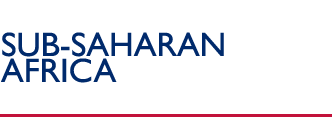Somalia
USAID's Strategy in Somalia
Somalia has been without a central government since 1991, and there have been numerous failed attempts at reconciliation. Ongoing peace talks in Kenya, led by a regional organization, the Intergovernmental Authority on Development (IGAD), repeatedly stalled during 2003. Civil unrest is the primary obstacle to economic growth and development in Somalia. Somalia's dynamic trade and transportation sectors have helped to keep the nation's economy afloat during years of crisis and civil war. However, the absence of effective regulation or systematic oversight, either by Somalia or the countries with which it trades, has generated diverse opportunities for trafficking in arms and contraband.
Infant and child mortality rates are among the highest in the world. Diarrhoeal disease-related dehydration, respiratory infections, and malaria account for more than half of all child deaths. Malnutrition is chronic and appears in acute forms in areas of drought, flooding, and localized conflict. Somalia also reports one of the highest maternal mortality rates in the world caused by poor antenatal, delivery, and postnatal care and limited obstetric facilities. Female genital cutting, affecting up to 95 percent of girls, is an underlying cause of maternal death and is a serious violation of child rights. Cholera is endemic and occurs on a seasonal basis. Water availability and access is a critical problem and a cause for both conflict and internal migration.
U.S. national interests are clear: stability and security will not be achieved in the greater Horn of Africa region without an end to conflict and Somali support for terrorism. U.S. policy is to encourage the return of Somalia to the international community. The United States and its allies combat extremism in Somalia by taking an active role in the peace process and with humanitarian assistance and support for long-term economic, social and democratic development.
Back to Top ^
|


